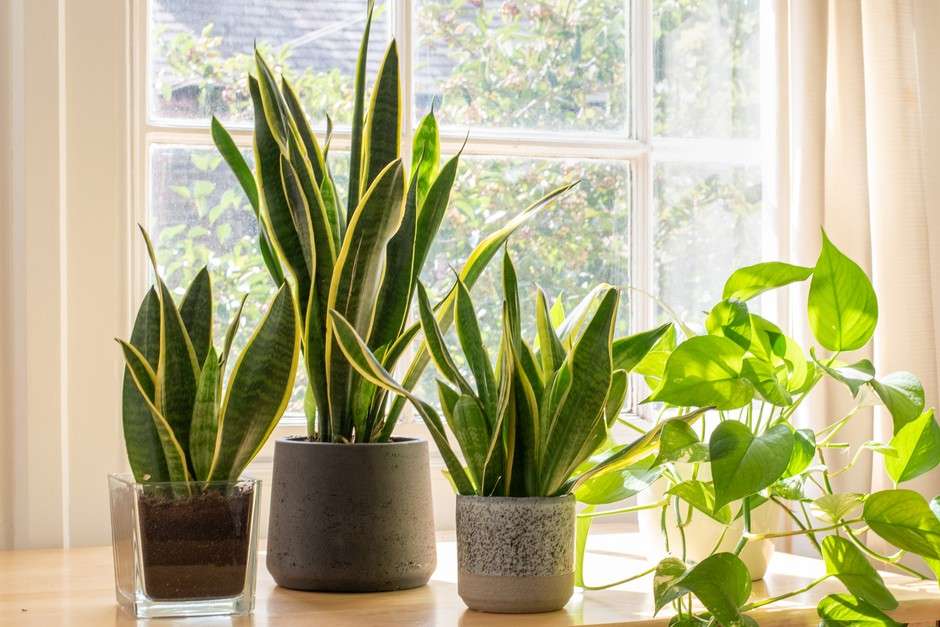Overview of the Snake Plant
Appearance and Varieties
The snake plant features tall, upright leaves that can grow up to 4 feet tall. The leaves are typically dark green with lighter green horizontal stripes, resembling snakeskin. There are several varieties of snake plants available, including:
- Sansevieria trifasciata 'Laurentii': Characterized by its yellow edges and dark green center.
- Sansevieria cylindrica: Known for its cylindrical leaves that can grow upright or spread out.
- Sansevieria trifasciata 'Hahnii': A dwarf variety that grows to about 6 inches tall, making it suitable for small spaces.
These variations allow individuals to choose a snake plant that fits their aesthetic preferences and living space.
Cultural Significance
In Indian culture, the snake plant is considered auspicious and is often associated with Vastu Shastra, an ancient Indian science of architecture that promotes harmony between individuals and their environment. It is believed that placing a snake plant in the home can bring positive energy, prosperity, and good fortune while warding off negative energies.
Benefits of the Snake Plant
Air Purification
One of the most significant benefits of the snake plant is its ability to purify indoor air. According to NASA's Clean Air Study, snake plants can remove harmful toxins such as formaldehyde, benzene, trichloroethylene, and xylene from the air. Unlike many other plants, the snake plant continues to release oxygen at night, making it an excellent choice for bedrooms as well.
Low Maintenance
The snake plant is renowned for being extremely low-maintenance. It thrives in a variety of lighting conditions—from low light to bright indirect sunlight—and requires minimal watering. Overwatering is a common mistake; it’s best to allow the soil to dry out between waterings. This makes it ideal for busy individuals or those who may not have a green thumb.
Health Benefits
Caring for plants like the snake plant has been shown to have positive effects on mental health. Engaging with nature can reduce stress and anxiety levels while promoting a sense of well-being. The act of nurturing a plant can provide a sense of purpose and accomplishment.
Aesthetic Appeal
With its unique leaf structure and vibrant colors, the snake plant serves as an attractive decorative element in homes and offices. Its vertical growth pattern adds height to indoor spaces without taking up much room horizontally. This makes it suitable for various interior design styles, from modern minimalism to traditional aesthetics.
Care Tips for Snake Plants
Light Requirements
While snake plants can tolerate low light conditions, they thrive best in bright indirect light. Avoid placing them in direct sunlight as this can scorch their leaves. If you notice your plant leaning towards a light source, it may be time to rotate it or move it closer to a window.
Watering
Watering should be done sparingly. Allow the top inch of soil to dry out before watering again. During the winter months, reduce watering frequency as the plant enters a dormant phase. Overwatering can lead to root rot, which is one of the most common issues faced by snake plant owners.
Soil and Potting
Use well-draining soil—such as cactus mix or potting soil mixed with perlite—to prevent water retention around the roots. Ensure that your pot has drainage holes to allow excess water to escape. Snake plants prefer being slightly root-bound; therefore, repotting every few years is sufficient.
Fertilization
Fertilizing is not necessary but can be beneficial during the growing season (spring and summer). Use a balanced houseplant fertilizer at half strength once a month during this period.
Propagation
Propagating snake plants is easy and can be done through leaf cuttings or division. For leaf cuttings:
- Cut a healthy leaf into sections about 4-6 inches long.
- Allow the cut ends to dry for a few days.
- Plant them in well-draining soil and water sparingly until new growth appears.
For division:
- Remove the plant from its pot.
- Gently separate the root ball into smaller sections.
- Replant each section in fresh soil.
Related Questions:
Can snake plants thrive in outdoor environments?
Yes, snake plants can thrive in outdoor environments, but their success largely depends on specific conditions. Here’s a comprehensive guide to help you understand how to care for snake plants outdoors.
Can Snake Plants Live Outside?
Snake plants (Sansevieria trifasciata), also known as mother-in-law's tongue, are hardy plants native to West Africa. They can be grown outdoors in USDA hardiness zones 9 to 12, where temperatures remain warm enough throughout the year. However, they are not frost-tolerant and should be brought indoors when temperatures drop below 50°F (10°C) to prevent damage or death from cold weather.
Conclusion
The snake plant is an ideal choice for Indian households looking for an attractive yet low-maintenance houseplant that offers numerous benefits—from improving air quality to enhancing mental well-being. Its cultural significance adds an extra layer of appeal for those who value Vastu principles in their living spaces. Whether you are new to gardening or an experienced plant parent, incorporating a snake plant into your home can bring both beauty and health benefits. With proper care and attention, this resilient plant can thrive for many years, making it a valuable addition to any indoor environment. In summary, if you're looking for an easy-to-care-for houseplant that not only beautifies your space but also contributes positively to your health and environment, consider adding a snake plant to your collection today!
